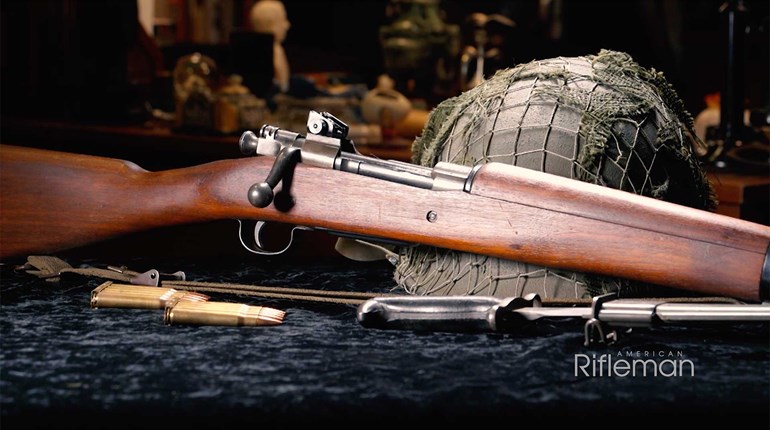
There is almost no facet of Operation Overlord, more commonly known as D-Day, that is not fascinating, amazing or both—even at a historical distance of 71 years. That the fate of a continent could hang by so many precariously over-stressed threads is a thriller in itself; that it succeeded in eventually liberating Europe might simply be the stuff of miracle.
Planning for Overlord began in 1943 as a result of the Trident Conference between British Prime Minister Winston Churchill and U.S. President Franklin Roosevelt. Soviet Leader Joseph Stalin had wanted a much earlier date (1942) for a second front, with the goal of putting pressure on Nazi dictator Adolph Hitler’s “rear.” Stalin had to be satisfied with the invasion of Sicily (July 1943), and subsequently of the Italian Peninsula. At the Tehran Conference in November 1943, Roosevelt and Churchill promised a cross-channel invasion by May 1944.
The scale of the Allied assault on Europe was daunting in every sense: 160,000 troops, 13,000 airplanes and 6,900 ships would eventually spread an attack across 50 miles of French beach. Choosing between four technically feasible possibilities, Allied planners eventually settled on five sites along the Normandy coast—Gold, Juno and Sword for the British, Canadians and some Free French, Utah and infamous Omaha for the U.S. landings. Though Normandy lacked a crucial harbor, it offered eventual access to Le Havre in the east and Cherbourg to the west. In the short term, artificial harbors (Mulberries) would be towed into place and anchored to serve the beachheads.
The deception efforts employed by the Allies under Operation Bodyguard were astonishingly complex in their own right. More than a dozen disinformation campaigns were executed over the many months leading up to invasion, including the assignment of U.S. General George Patton to the fictitious 1st U.S. Army Group. Complete with inflatable tanks and re-routed radio traffic, Patton’s job was to convince German intelligence that the French port of Calais was his objective. That this was both worthwhile and successful is beyond question: The Germans still believed Patton would assault Calais into July.
A break in the weather was perhaps the final impetus to go on June 6, 1944. The proper combination of wind and tide still proved elusive, and many landings occurred far from their intended targets. German commanders—including famed tanker Erwin Rommel—were out of position when the attack came, believing that weather would delay the Allied onset until at least mid-June."This operation is not being planned with any alternatives. This operation is planned as a victory, and that's the way it's going to be.” —General Dwight D. Eisenhower
In the end, none of it would matter: Supreme Allied Commander (and eventual 34th president) General Dwight Eisenhower issued his orders, and shortly after midnight two American and one British/Canadian division of para- and glider-borne troops dropped into Normandy and Brittany. Behind the beaches, they cut or secured key transportation routes and eliminated high-value targets. At 6:30 a.m. the Americans went ashore, with British, Canadian and French troops following on their beaches roughly an hour later. Allied mastery of the air denied the defenders both intelligence and most reinforcements. The French Resistance destroyed more than 50 locomotives, and cut rail lines in more than 500 places.
Field Marshals Gerd von Rundstedt and Erwin Rommel had 50 divisions (though many were under-strength and relatively inexperienced) at their disposal in France and the Low Countries, but Allied disinformation had been so effective that their long front was impossible to defend. Indeed, Rommel had reported shortly before D-Day that in some areas his defensive constructions were less than 20 percent complete. An overly complex command structure hampered early resistance, and by June 12, a 900-square-mile (about 60 miles by 15 miles) lodgment had joined the five beachheads.
Allied casualties were high, with Omaha the worst. Well-fortified cliff positions were fiercely defended, resulting in 2,000 American casualties. Armor support from specially designed tanks (which worked well on other beaches) failed, for the most part, to reach the shore at Omaha. Only on D-Day + 3 were the planned objectives for Day 1 achieved. Nearly 10,000 casualties occurred on all beaches out of the nearly 160,000 men landed on D-Day. German and civilian casualties were 1,000 and 3,000, respectively.
It would be a bloody 11 months (especially including the Battle of the Bulge), but victory in Europe and the end of the Nazi’s “Third Reich” would come. Already weary of war and sacrifice after 2½ years, President Roosevelt’s D-Day prayer captured the mood and determination of the nation:
"They fight not for the lust of conquest. They fight to end conquest. They fight to liberate. They fight to let justice arise, and tolerance and goodwill among all Thy people. They yearn but for the end of battle, for their return to the haven of home."



































